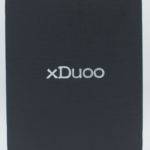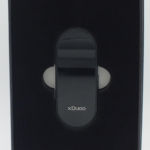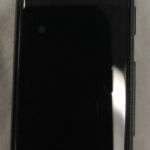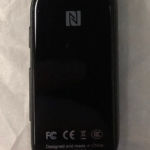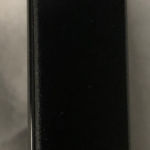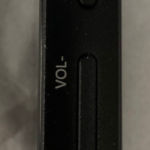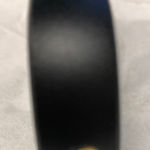Xduoo XQ-25
Disclaimer: The XQ-25 was provided by Xtenik in exchange for reviewing it. I have no financial interests in either Xduoo or Xtenik. For more information about the XQ-25 see the Xtenik website or Xduoo Website.
The Xduoo XQ-25 is their follow-up to the XQ-23 bluetooth DAC/Amp with updates to the chip and to bluetooth with the upgrade from 4.2 to 5.0. The class of product has become increasingly popular as the omission of the 3.5mm Jack on cellphones and tablets become more and more common. I have had several pass through my hands and still have a few others on hand to compare. All offer bluetooth connectivity to a source device with output to a 3.5mm jack so you can use your favorite old school earphones with your new phone. Many also combine usb dac functionality and a few even add a bluetooth transmit capability that allows sending wired input to the device and then transmitting via bluetooth to a speaker. I have found this arrangement useful for outdoor speakers around the pool where use of more expensive gear is foolish.
Unboxing / Accessories:
Packaging is well done with an outer box with details of the product displayed and then a storage/presentation box in a matte black finish for use after purchase. The outer packaging is thin enough that it is easily damaged in opening the XQ-25, but the inner is sturdy enough for long term use. Inside the box, the XQ-25 sits in a foam surround with another small box resting beneath it containing the USB cable, warranty card, and instruction booklet. I was somewhat surprised by the lack of any mechanism to clip the device onto a shirt, belt etc…, or any form of case to protect it when carried in a pocket. These seem like pretty obvious shortcomings for a device meant for portable use and particularly one with a microphone that needs to have a consistent placement close to the mouth of the user.
Build:
The XQ-25 has a glass front and rear face with a aluminum ring surrounding the device. The faces are a bit of a fingerprint magnet, but do give the little device a premium look and feel. Going around the device from the left side, we have the mic and micro-usb charge port on the left, the 3.5mm jack at the top, and the control buttons on the right. The only indicator light is on the reverse in the upper right at approximately the mid-point of the curve. Buttons have a very solid click mechanism that prevents pressing them by accident while in a pocket. (More on controls and LED later).
Internals:
The XQ-25 utilizes the Qulacomm QCC3008 for Bluetooth communications and supports Bluetooth 5.0, SBC, AAC, and AptX and (low latency mode) but stops short of AptX-HD. Once the signal is received, an ES9118 DAC chip handles the decoding duties before passing off to an amplifier chip. Output power is listed as 32mW into 32Ω load, so the XQ-25 is limited to fairly low impedance, high efficiency earphones. Going to low sensitivity or high impedance designs will dramatically limit the available volume.
Connectivity:
In discussing the connectivity of the XQ-25, we need to break it down into a couple distinct sections as the device can be used as both a bluetooth receiver and as a usb wired DAC/amp.
Wireless use:
In order to use as a bluetooth receiver from a phone or dap, the XQ-25 must first be paired. This can be done by conventional method with the light blinking blue to indicate pairing mode and then on steadily once paired. The other option is to use near field communication (NFC) or touch pairing. I had no trouble getting the Samsung S10 to recognize the little XQ via touch so this makes for a simple option provided the phone has the capability and is supported. Once paired to the Xduoo X10Tii I found the XQ-25 worked quite well as latency was lower than usual and touches to the controls quickly cycled forward and back through my library or paused playback without delays. Range was good as long as no solid barriers were presented with an average range of 25 meters in open space. When paired to phones, results were more mixed. The XQ-25 paired well with the iPhone and Samsung, but struggled to stay connected to a Moto Z3 when used with it. It seems to be feast or famine as it worked well with several devices with no drops (unless expected by presenting barriers), but the Moto just would not stay connected even with the phone in a back pocket and the XQ in my front pocket. I have to suspect this has more to do with the phone than the XQ as I found no other pairings of DAPs or phones that behaved this erratically. If purchasing for use with a phone, it might be wise to test first to avoid this.
Another nice feature when used in bluetooth mode and connected to an android or IOS phone is the ability to see the battery level on the phone. I found this worked with some android daps, and not others probably depending on how stripped down the android OS was on that particular device.
Sound:
Sound is fairly close to neutral with a slight roll-off at the low-end probably due to power restrictions, and a bit of a upper mid-range push that makes vocals sit slightly forward of neutral. Neither is pronounced, and both would probably go unnoticed if using the XQ-25 for its intended use as I don’t think anyone is going to expect studio type results out of a budget portable. Output power is quite limited with a rated 32mW output when using a 32Ω load. This means the XQ-25 is best paired with fairly sensitive IEMs. I did try the XQ-25 and it worked reasonably well with Grado SR60, so low impedance, high sensitivity on-ears or over-ears are also good options.
Call Quality:
I found call quality to be good if the XQ was turned so the microphone wasnt partially covered by a shirt collar. The mic is somewhat susceptible to wind, but not as much as some other models. Noise from the surroundings is filtered reasonably effectively as I put background music on and made test calls to see at what point the background began to interfere. I either had to be close to the source or have the music at above normal listening volume to interfere.
Battery life:
Xduoo rates the XQ-25 for 7 hours playback time on a 3 hour charge and those numbers were fairly close to what I got during my testing. If anything, I found the unit to perform a little better than expected as I could coax nearly a full 8 hours from it at the volume level I typically use while at work.
Comparisons:
This segment of the market has kind of exploded since Apple announced they were dropping the 3.5mm jack and other makers followed suit. Lately it seems that several makers have released models in rapid succession as they improve on connectivity and power savings.
XQ-23:
Xduoo has done both in moving from the XQ-23 to the 25 by switching from the Wolfson WM8955 DAC and CSR8670 BT chip both of which required more power than their counterparts in the XQ-25. The improved BT chipset in the XQ-25 also improves on the XQ-23 as the 23 supported 4.1 and the newer supports 5.0. (Note for audio purposes 4.2 and 5.0 are essentially dead even so the improvement here is basically the same as 4.1 to 4.2 upgrade). Power output has remained basically unchanged so we can assumed the same output circuit is in use in both versions. Battery life went from a rated 5 hours playback to 7 hours while charge time went up from 1 hour to 3 so we can assume some of the improvement is a larger cell and some is power conservation.
Fiio BTR1k:
The BTR1k is the closest Fiio device price wise and specs are very similar with support for Bluetooth 5.0 and aptX / aptX LL / SBC / AAC provided by a QCC3005 chipset. The DAC is also roughly equal to the XQ-25 as the BTR1k uses the AK4376A. The Fiio device uses USB-C as opposed to the micro-usb of the XQ-25 and both provide USB dac functionality with roughly equal function. Both have NFC pairing and also sport roughly the same battery life. Points in the BTR1k favor are a clip to attach it, and slightly more neutral sound, while the XQ-25 has better construction, longer battery life and is $10 less expensive.
Fiio BTR3:
The BTR3 is Fiio’s premium offering and construction is much closer to that of the XQ-25 but specs are a step above it. The BTR3 adds AptX HD, LDAC, and LHDC support in addition to the standards provided by the XQ-25. The BTR3- utilizes USB-C and can operate as a USB-DAC as well. Battery life is slightly better than that of the XQ-25 as well. With a price difference of $25 retail, the BTR3 is a bit more expensive so if you aren’t in need of LDAC, the XQ-25 is a good fit.
Radsone ES100:
The ES100 is double the price of the XQ-25 but does offer some premium features such as dual dac (AK4375a), 2.5mm balanced output, and a longer (nearly 12 hour) battery life. I prefer the construction on the XQ-25 as it feels slightly more premium by comparison, but the feature set keeps bringing me back to the ES100. Honestly, these two devices are designed for two different markets and with one costing double the other comparisons are slightly lopsided at best.
Summary
Pros: Good controls, very little latency on button push
Cons: Cuts out more than some others, no shirt, pocket clip or case provided.






